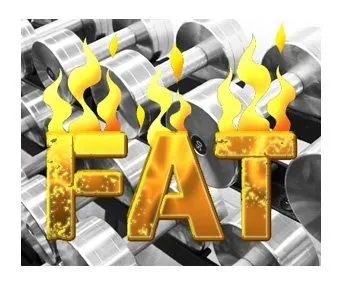Part 3 – Could Your Exercise Be Making Your Diabetes Worse?
Is exercise making your diabetes worse? Few people would doubt the benefits of exercise for a diabetic, but what is being questioned is the type. In my opinion, with new research, there is little room for doubt as to the best the type of exercise. More and more of the current research shows that high-intensity interval training (often referred to as HIIT or as I refer to it; Burst Training) is far superior to low intensity endurance (aerobic types) of exercise. A recent study, completed in 2011, showed that High Intensity Interval Training (HIIT) profoundly increased the capacity for glucose uptake.1 There was a greater than 3.5 increase in something known as GLUT-4, indicating a profound increase for glucose uptake. This is far superior to other types of exercise (especially low intensity endurance training). Past studies by this researcher have shown similar results and also indicate that high-intensity interval training causes something known as mitochondrial biogenesis. Simply put, it increases the number mitochondria (the energy producing factories of your cells), which not only increases glucose uptake, utilization and the ability to burn fat. Low-intensity exercise has been shown to have the opposite affect and can actually have a negative effect glucose levels and consequently, your diabetes. That being said, if your interest is to lower glucose and burn fat for energy, high-intensity interval training (Burst Training) should be your exercise of choice. The best news is, this type of exercise takes less time with better results.
This is a high intensity workout and will take little time. No more, “I don’t have time to workout” excuses! High-Intensity Burst Training is getting your heart rate up quickly for about a minute’s time. This is performed by doing 3-4 sets, which takes a total of 10-12 minutes/3 times/week, and the best part is studies also show doing more is not necessarily better. This can be done with many different types of exercise; running in your back yard, the street, treadmill, and doing other types of Burst Training that you can do at home (watch video for other exercise ideas). If you think you are too old for High-Intensity Burst Training, think again. The more out of shape and the older you are, the easier it is to get your heart rate up to accomplish a high intensity effort. I don’t know about you, but I would rather be able to say I am getting maximum results with my workout, as well as improving my diabetic condition, without putting in hours at the gym. The benefits do not stop at improving diabetes.
Research indicates other incredible health benefits that include:
- A great way to decrease stress is through Burst Training and it also is excellent at achieving an encouraging mood state. The popular phrase, known as “runner’s high,” has previously been attributed to endurance training lasting longer than 1 hour. Betaendorphins, levels following “incremental graded and short term anaerobic exercise, the extent correlating with the lactate concentration.” 2,3
- The result of intermittent exercise increased the high-density lipoprotein levels (good cholesterol) significantly.2,3
- In 2007, a study was printed on patients who had suffered heart failure, and circulation assessed the helpfulness of high-intensity training them specifically. Exercise intensity had results that showed “an important factor for reversing LV [left ventricular] remodeling, improving aerobic capacity, and quality of life in patients with post infarction heart failure.” The difficulties of this “suggest that training programs based on these principles may yield more favorable results than those with low to moderate exercise intensities.” 4
The How-To!
The idea of Burst Training is to go as hard as you can, or almost as hard as you can, for at least thirty to sixty seconds, followed by a rest of 2-4 minutes until you recover (meaning your breathing has returned to almost normal). This is repeated for 3-4 sets for a total time of 10-12 minutes. In most studies for the average person, 30-60 seconds is where the most results were obtained. Well-trained and very in shape individuals can benefit from more time at high intensity or more sets, but it’s not necessary to get the most benefit for fat burning and hormonal issues such as diabetes.
The question I am asked the most often is how do I know if I am going hard enough because studies say to go at least 80-90% of your maximum heart rate. If you are breathing heavy enough that you cannot talk to the person next to you, then you went hard enough for it to work. Remember, the type of exercise doesn’t matter as long as you get your heart rate up to where the difference is made. In the video, you see many different types of exercise being shown, all with equal results. Choose what works for you and try mixing it up so you do not get bored.
Some other questions I also get asked are, “How often do I need to do it?” or “Can I do it everyday?” Most of the studies show that every other day provides the greatest benefit. For the exercise enthusiast that wants to work out every day, I further explain that in the video as well as give suggestions on how this can be accomplished. However, the vast majority reading this, the good news is you can work out less and not feel the guilt or need to do more. When you understand how Burst Training works, you can understand why less is best.
The Hormone Connection
We have all heard that staying in the fat burning zone, a very low heart rate where your body does not burn sugar, but fat for energy, is where you burn the most fat during exercise. Although this is true, the question I would ask you is would you rather burn fat for the 30-60 minutes during exercise or for 36-48 hours afterward? Burst Training burns only sugar during exercise, but because of the rise in growth hormone, testosterone and other fat burning hormones, you burn fat for an average of 2 days. Studies show that during endurance or aerobic types of exercise where you burn fat only while you are performing the exercise, growth hormones and fat burning hormones move in the opposite direction thereby limiting your results and oftentimes making your metabolism less efficient. The result is oftentimes losing muscle and gaining fat.
When you look at these studies, they indicate that the fuel used during exercise is the opposite of what is used during recovery. For example, if you burn fat during exercise, you will most likely break muscle down into sugar during the recovery, therefore dropping your metabolic rate. Burst Training that only burns sugar during the exercise period will utilize fat during the recovery phase in order to replenish the stored sugar (glycogen). This phenomenon is caused by the rise in anabolic hormones, such as growth hormone and testosterone, which can only be achieved through high intensity training. The Bryner Study showed that high intensity, 80-90% of maximum heart rate, was what allowed the body to lose the most fat. No significant change in body fat was found in the lower intensity group, which exercised at 60-70% of maximum heart rate, and again with no significant difference in workload between the groups. But for the low intensity group, they continued to lose muscle at some point and actually gained body fat.
I am also asked about the role of resistive training (weight lifting) because of the many studies that show the similar effect to Burst Training on hormones and diabetes. The fact is resistive training is a form of High Intensity Burst Training and, therefore, achieves the same results. Weight lifting or sprinting causes the heart rate to rise and only sugar is burned during the exercise.
Performing both resistive training as well as Burst Training, in my opinion, will bring forth the best results because of the added benefits of resistive training. Resistive training strengthens muscles, ligaments and tendons, which is undeniably an added benefit, especially as we age.
In the video, I give multiple examples of how to do both and even demonstrate a way to do them simultaneously and still stay within the 10-12 minute time frame 3 times/week.
When you combine the proper diet such as The Cellular Healing Diet with PompaCore Cellular Detox and Burst Training, incredible results soon will follow. The Cellular Healing National Diabetes Program was established to educate and connect doctors who understand and practice these principles each and every day in order to make a difference in this massively growing epidemic.
Article 3 of a 3-part Diabetes Series:
References:
- Little P., Safdar A., Bishop D., Tarnopolsky, M. A., Martin J. 2011. An acute bout of high-intensity interval training increases the nuclear abundance of PGC-1α and activates mitochondrial biogenesis in human skeletal muscle. Gibala American Journal of Physiology – Regulatory, Integrative and Comparative Physiology. June Vol. 300no. R1303-R1310DOI: 10.1152/ajpregu.00538.2010.
- <Smith, M.J. 2002. Sports conditioning—a comparison: Moderate-intensity continuous activity and high-intensity intermittent activity. www.xiser.com; retrieved Jan. 21, 2009.
- Williams, P.T. 1998. Relationships of heart disease risk factors to exercise quantity and intensity. Archives of Internal Medicine, 158 (3), 237–45.
- Wisløff, U., et al. 2007. Superior cardiovascular effect of aerobic interval training versus moderate continuous training in heart failure patients: A randomized study. Circulation, 115,3068–94.












